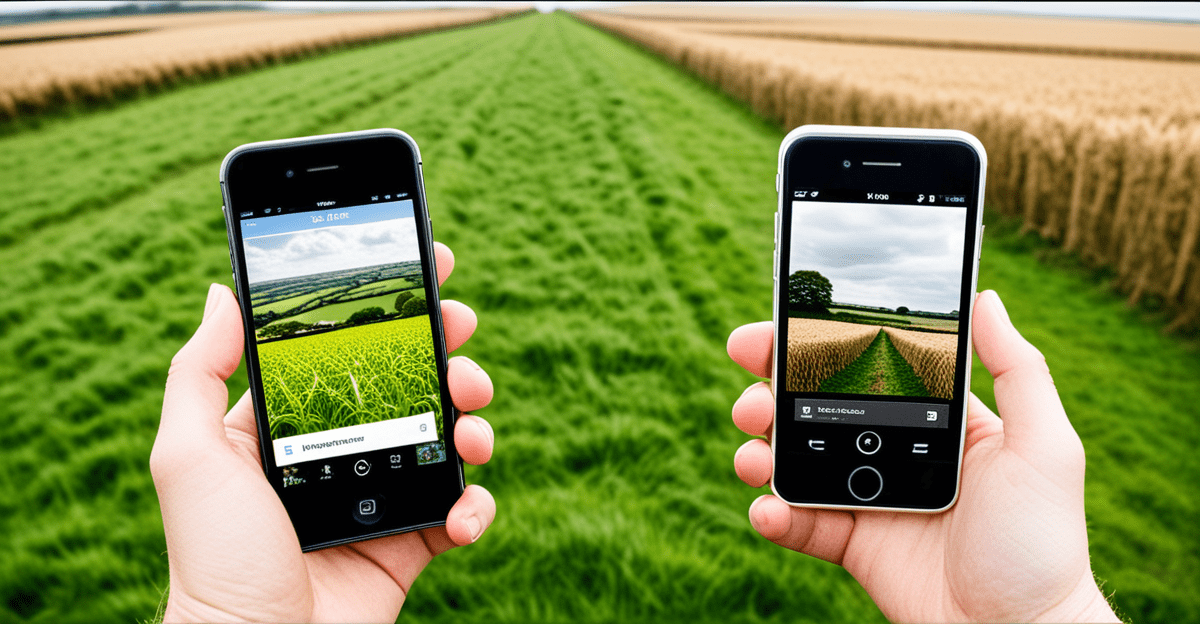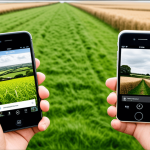Overview of Smartphone Penetration in the UK
In the realm of smartphone penetration in the UK, a considerable disparity exists between urban and rural locations. Urban areas boast a higher penetration of smartphones compared to their rural counterparts. According to recent UK statistics, approximately 90% of residents in urban centers own smartphones, while in rural areas, this figure drops to about 75%. This discrepancy can be attributed to various factors, such as better network coverage and access to affordable smartphone options in urban settings.
Year-on-year growth in smartphone usage has been robust in the UK, with an average annual increase of 5% in urban regions and a slightly lower rate of 3% in rural areas. This indicates an ongoing trend towards higher connectivity, influenced by societal shifts and technological advancements.
This might interest you : How are UK gaming industries adapting to smartphone technology?
A comparative analysis of penetration rates reveals significant differences between demographics. Younger age groups, particularly those aged 18 to 24, exhibit an almost universal smartphone ownership rate, regardless of geographical location. Conversely, older demographics, especially those above 65, demonstrate a marked difference in smartphone penetration, with urban elderly being more likely to own smartphones compared to those in rural environments.
Understanding these statistics is essential for addressing the technology access gap between urban and rural areas and for promoting equal opportunities for all demographics in the digital age.
Have you seen this : How Will Smartphone Innovation Shape the Future of Computing?
Usage Habits of Smartphone Users
Understanding smartphone usage habits reveals distinct patterns between urban and rural areas. On average, urban users spend approximately 3 hours daily on their devices, favouring social media and productivity apps, while rural users typically spend 2.5 hours, prioritising communication and utility apps. These differences highlight how environmental influences, such as lifestyle and network coverage, shape app preferences.
Moreover, urban users frequently leverage digital tools for managing work and social engagements, reflecting the fast-paced urban lifestyle. In contrast, rural users often rely on smartphones for practical applications like farming weather apps or remote educational resources, showing a more utilitarian approach. By examining these habits, we can see how the environment significantly impacts user engagement and the types of services valued in each setting.
Demographics of Smartphone Users
In the landscape of smartphone demographics within the UK, factors such as age, gender, and socio-economic status play pivotal roles in usage patterns and preferences. These demographics highlight the diversity in smartphone engagement between urban and rural environments.
Age Distribution
Age significantly influences smartphone ownership and the type of applications used. Younger age groups, especially those under 30, are more likely to be early adopters of new technology, consistently exploring apps across various categories. Meanwhile, older generations, particularly those over 50, often engage in more traditional smartphone activities, like calls and texts, with limited app exploration.
Gender Differences
Gender-specific usage trends reveal interesting dynamics. Men are generally more inclined to use smartphones for gaming and technology-related applications, whereas women tend to prioritise social networking and lifestyle apps. These differences are subtly evident across both urban and rural demographics.
Socio-economic Factors
Socio-economic factors heavily influence smartphone access and usage behaviours. Individuals from higher income brackets have broader access to advanced smartphones and premium applications. Conversely, those in lower income brackets might opt for budget-friendly devices, focusing on essential utilities over premium app subscriptions. These trends underscore the disparities in smartphone engagement driven by economic conditions across urban and rural segments.
Access to Technology and Internet Connectivity
The disparity in internet connectivity between urban and rural areas in the UK highlights the challenges of technology access. In urban centres, mobile network coverage is generally robust, offering higher-speed internet availability and reliable connectivity. Conversely, rural environments often grapple with slower internet speeds and patchy network coverage, hindering efficient technology use.
These challenges arise from logistical hurdles and lower infrastructure investments in remote locations, creating a digital divide. While urban residents benefit from cutting-edge technology support and seamless connectivity, rural counterparts face obstacles in acquiring similar standards.
Addressing these issues requires focused efforts to enhance rural connectivity. By investing in better infrastructure and ensuring equitable distribution of technology, the UK can bridge the gap and provide uniform access, empowering all users regardless of geographical location.
Impact of Smartphone Usage on Communication
Delving into communication methods reveals diverse patterns between urban and rural settings. In urban areas, people typically prefer a mix of texting, social media platforms, and instant messaging apps to maintain rapid and versatile communication. This is largely facilitated by the robust internet connectivity which supports frequent updates and interactions.
Conversely, rural communication leans more towards traditional calls and texting, partly due to the challenges in technology access such as poorer network coverage, which limits the seamless use of data-heavy applications. Despite these differences, both groups utilise smartphones as a primary tool for maintaining connections, albeit in ways that reflect their distinct environments.
Moreover, urban smartphone usage often influences interpersonal relationships by fostering a culture of immediacy and constant availability. This contrasts with rural habits, where communication may be less frequent but more spaced out, potentially fostering deeper but less frequent connections.
Understanding these differences between urban and rural communication patterns helps in appreciating how technological accessibility and environmental factors shape social interactions. This knowledge can also inform strategies to bridge communication gaps and enhance connectivity resources for under-served rural areas.
Social Media Engagement Patterns
Engagement with social media usage reveals notable differences between urban and rural populations, influenced by accessibility and lifestyle. In urban environments, popular platforms such as Instagram, Twitter, and Facebook dominate. These platforms cater to a fast-paced lifestyle, offering quick news updates and social interactions. Rural users, however, lean more towards platforms like WhatsApp and Facebook, which facilitate more personal and community-oriented communication.
Popular Platforms
Urban users frequently engage with platforms that emphasize visual and rapid interaction. Instagram’s popularity is evident due to its focus on visuals and stories that resonate with younger, urban users. In contrast, rural users often prefer platforms that support community ties, such as WhatsApp.
Frequency of Engagement
Urban social media engagement is characterized by multiple daily interactions, reflecting the fast-paced urban lifestyle where individuals often have more downtime during commutes or breaks. Rural engagement might be less frequent, focused primarily during specific times of the day due to the nature of day-to-day activities that might not revolve around constant connectivity.
User Interaction Styles
Urban and rural users differ in their interaction styles; while urban users are more inclined to share and comment on public posts, rural users often prioritize private messaging and group chats. This reflects differing priorities and connectivity limitations, shaping how individuals interact with social media content.
Technology Adoption and Trends
In examining technology adoption in the UK, the contrast between urban and rural areas is prominent. Urban centres typically lead in smartphone trends, rapidly integrating new features like mobile payments and augmented reality (AR). This is driven by better access to the latest technologies and more tech-savvy populations. However, while urban users may eagerly embrace cutting-edge innovations, rural adoption tends to be slower and more cautious.
Socio-economic factors play a significant role in these adoption patterns. In urban regions, higher income levels often correlate with quicker adoption of premium smartphone features. Conversely, rural users might prioritise more practical, budget-friendly technology over costly innovations, highlighting the disparity in economic capabilities.
Furthermore, user perception towards new technologies varies significantly. Urban dwellers usually have a more favourable outlook, seeing these advancements as essential lifestyle upgrades. Meanwhile, rural communities might view them as non-essential, influenced by less exposure and the pragmatic nature of rural living.
Ultimately, these trends underscore a clear urban vs. rural divide in technology culture, shaped by access, socioeconomic status, and lifestyle preferences. Understanding these dynamics is crucial for crafting policies that promote inclusive technology growth across all regions.











